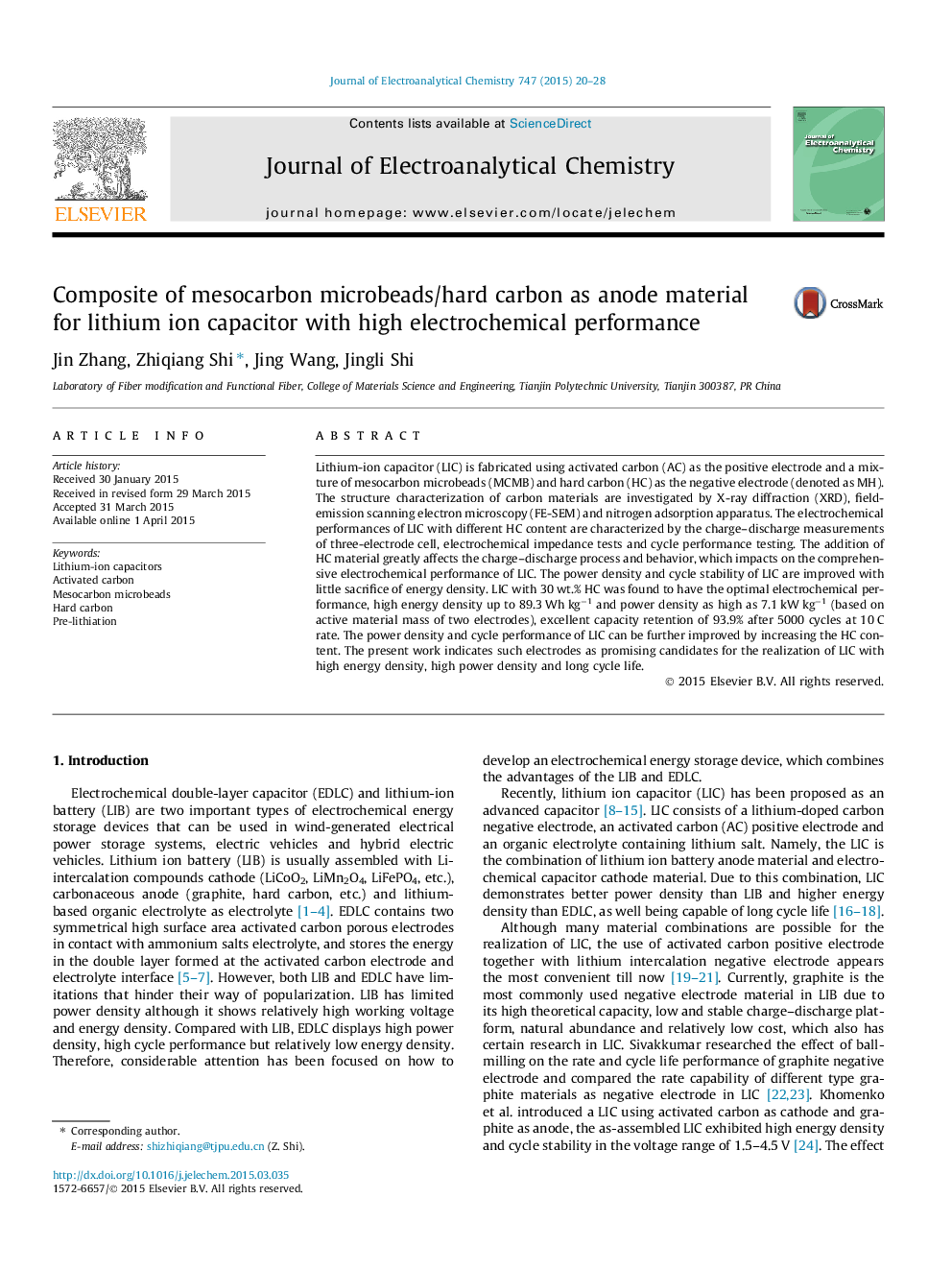| Article ID | Journal | Published Year | Pages | File Type |
|---|---|---|---|---|
| 6662404 | Journal of Electroanalytical Chemistry | 2015 | 9 Pages |
Abstract
Lithium-ion capacitor (LIC) is fabricated using activated carbon (AC) as the positive electrode and a mixture of mesocarbon microbeads (MCMB) and hard carbon (HC) as the negative electrode (denoted as MH). The structure characterization of carbon materials are investigated by X-ray diffraction (XRD), field-emission scanning electron microscopy (FE-SEM) and nitrogen adsorption apparatus. The electrochemical performances of LIC with different HC content are characterized by the charge-discharge measurements of three-electrode cell, electrochemical impedance tests and cycle performance testing. The addition of HC material greatly affects the charge-discharge process and behavior, which impacts on the comprehensive electrochemical performance of LIC. The power density and cycle stability of LIC are improved with little sacrifice of energy density. LIC with 30 wt.% HC was found to have the optimal electrochemical performance, high energy density up to 89.3 Wh kgâ1 and power density as high as 7.1 kW kgâ1 (based on active material mass of two electrodes), excellent capacity retention of 93.9% after 5000 cycles at 10 C rate. The power density and cycle performance of LIC can be further improved by increasing the HC content. The present work indicates such electrodes as promising candidates for the realization of LIC with high energy density, high power density and long cycle life.
Related Topics
Physical Sciences and Engineering
Chemical Engineering
Chemical Engineering (General)
Authors
Jin Zhang, Zhiqiang Shi, Jing Wang, Jingli Shi,
